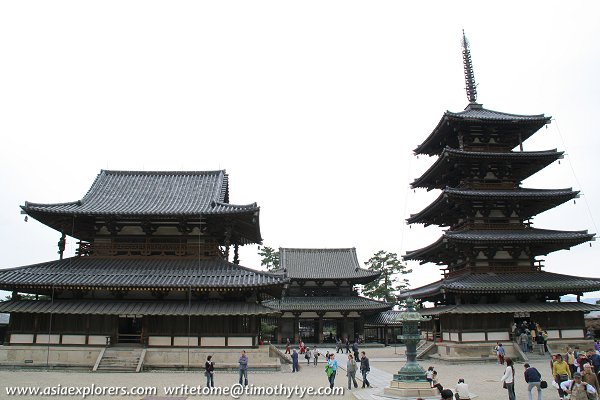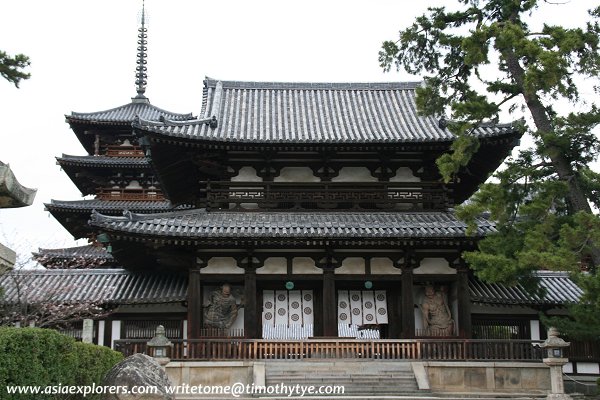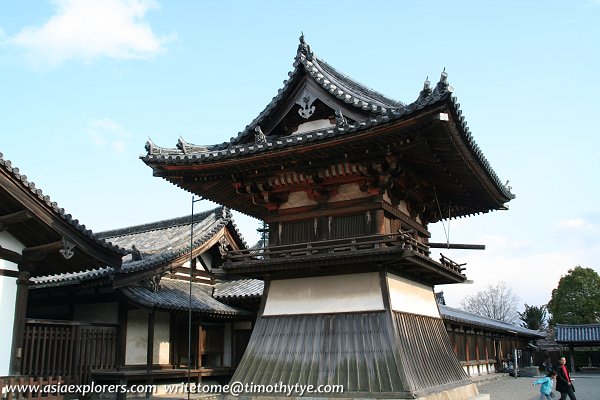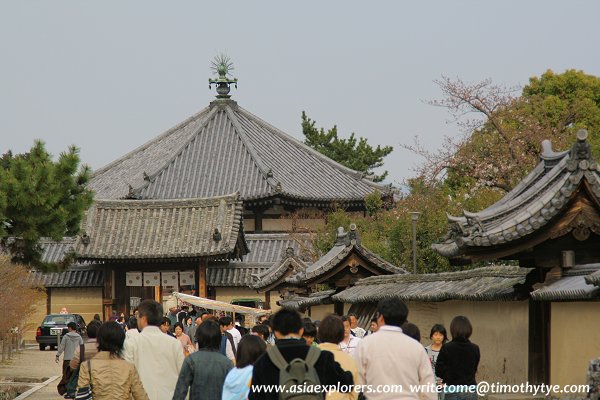Horyu-ji Temple is one of the most celebrated temples in Japan. It is located in Ikaruga, Nara Prefecture, near the border with Kyoto Prefecture. Its full name is Horyu Garkumonji, meaning "Learning Temple of the Flourishing Law". The temple is both a seminary and a monastery. In 1993 it was the first batch of properties to be inscribed as a World Heritage Sites in Japan, under Buddhist Monuments in the Horyu-ji Area.
Horyu-ji is most famous for having within its temple complex one of the oldest existing wooden buildings in the world. The temple traces its history to its founding by Prince Shotoku in AD 607, with the completion of the first temple building, at that time known as Ikaruga-dera.
As with Yakushi-ji and Shin Yakushi-ji, Horyu-ji Temple was dedicated to the Buddha of Healing, Yakushi Nyorai, also known as Bhaisajyaguru of Mahayana Buddhism.
 Horyu-ji Temple, Nara (31 March, 2007)
Horyu-ji Temple, Nara (31 March, 2007)
 The Chumon or Inner Gate of Horyu-ji Temple (31 March, 2008)
The Chumon or Inner Gate of Horyu-ji Temple (31 March, 2008)
Long believed to be some of the oldest buildings in Japan, the Horyu-ji Temple attracted some degree of controversy when architecture historian Sekino claimed that the temple was a reconstruction. By 1939, excavations carried out uncovered the older temple site, and in a way substantiated Sekino's claim.
By 2006, most historians and archeologists maintained a consensus view that the current ensemble is a reconstruction. There is likelihood that the original bured down in a fire in AD 670, as chronicled in the Nihon Shoki, the second oldest book of classical Japanese history. During the reconstruction, which was completed around AD 711, the temple was slightly reorientated. Further restoration and reconstruction works took place in 1374 and 1603.
 Belfry of Horyu-ji Temple (31 March, 2008)
Belfry of Horyu-ji Temple (31 March, 2008)
Horyuji Temple today is composes of two groups of temple buildings, one called Sai-in on the western precinct, and another called To-in, on the eastern precinct. These two groups are connected by a 122-meter passageway.
Within the western precinct is the main hall, or Kondo, and the five-storey pagoda. In the eastern precinct, the main building is the octagonal Yumedono, or "Hall of Dreams". The belfry is also located here. Other buildings scattered around the complex includes monk's quarters, lecture halls, and so on. There is also now a museum exhibiting the artifacts and treasures of Horyu-ji Temple.
 Walking between the western and eastern precincts of Horyu-ji Temple (31 March, 2007)
Walking between the western and eastern precincts of Horyu-ji Temple (31 March, 2007)
 Latest updates on Penang Travel Tips
Latest updates on Penang Travel Tips
 Map of Roads in Penang
Map of Roads in Penang
Looking for information on Penang? Use this Map of Roads in Penang to zoom in on information about Penang, brought to you road by road.
Copyright © 2003-2025 Timothy Tye. All Rights Reserved.

 Go Back
Go Back